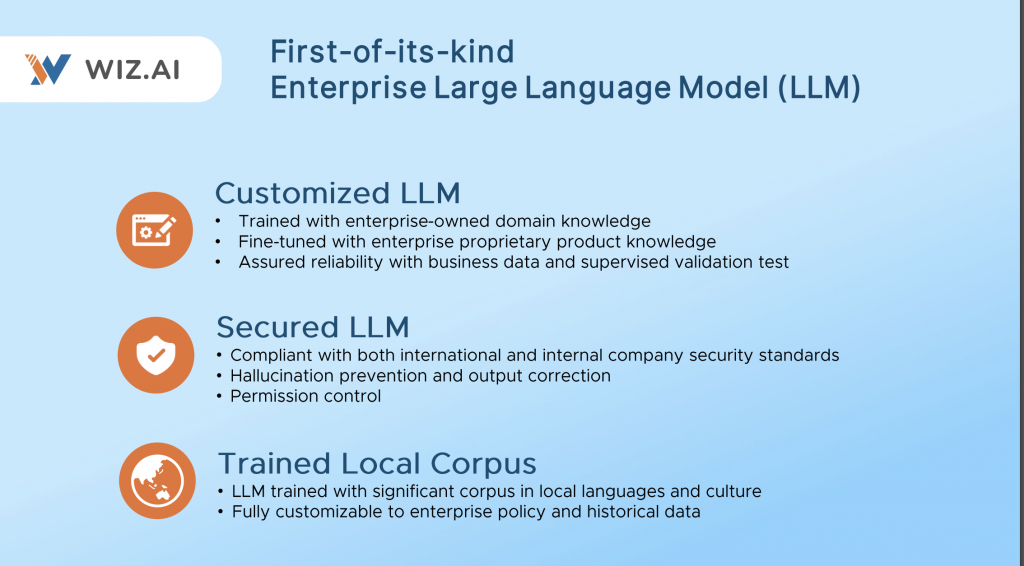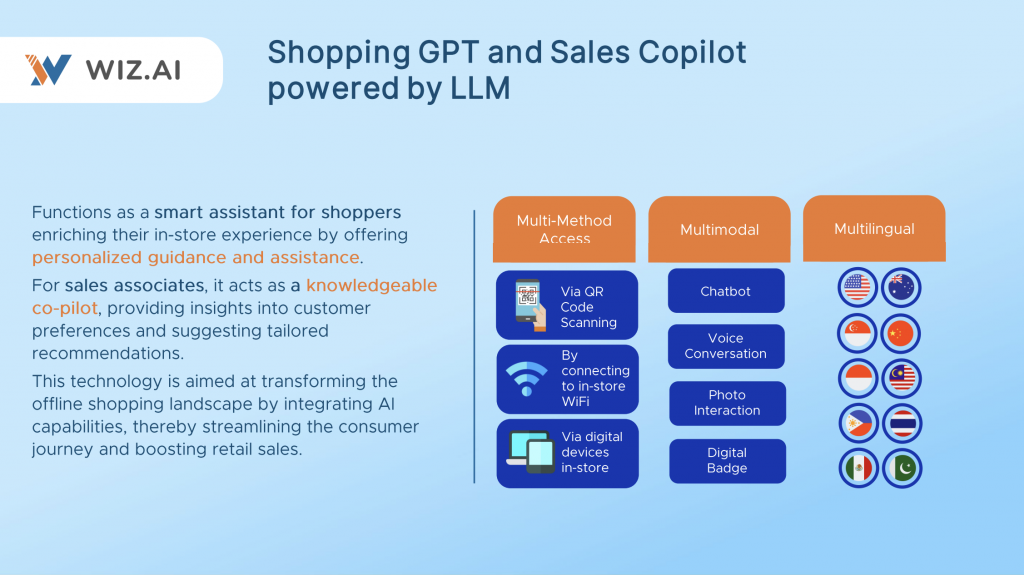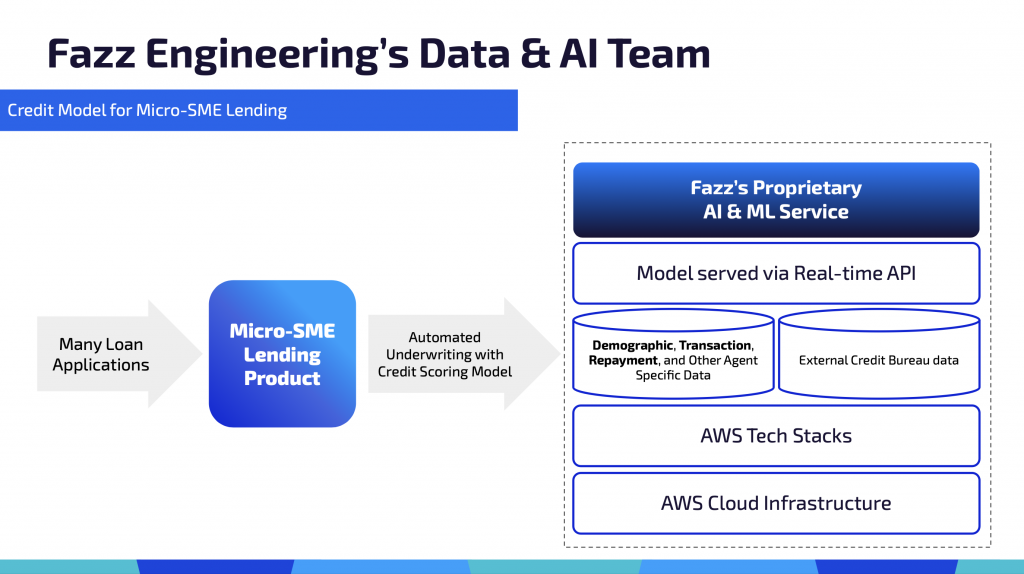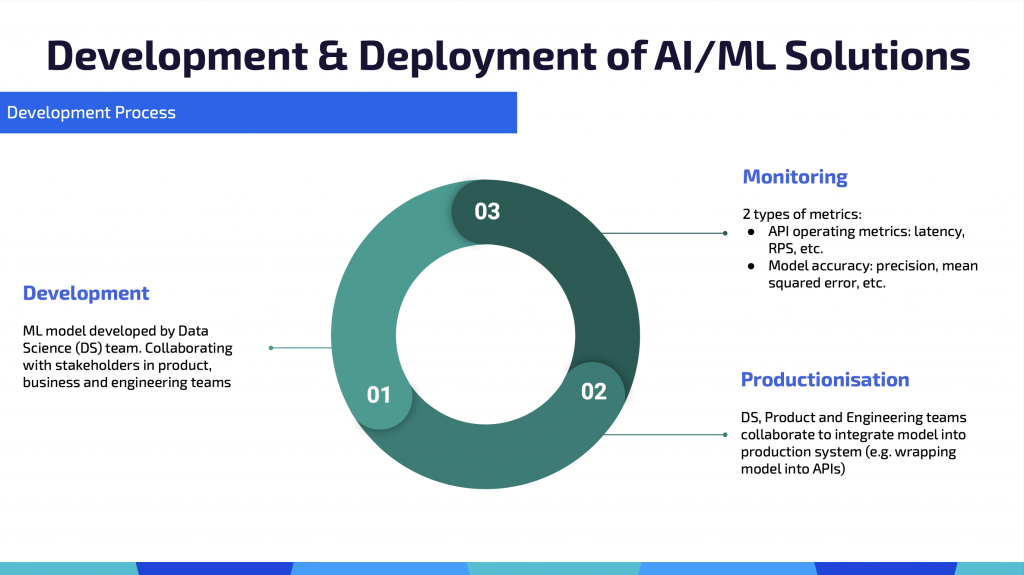Last week, AWS held the first session of their Gen AI Pivot program in Singapore, featuring discussions on generative AI from founders, operators, and investors. Among these were sharings from Southeast Asia business fintech group Fazz’s Head of Engineering David Park and Head of Data & AI Seong Per Lee, as well as WIZ.AI‘s Solutions Architect Kev C., who share use cases on transforming business operations through generative AI.
In the 19th edition of our AI Notes series, we share takeaways from their sharings on operational implementation of generative AI for organizations and use cases in financial services and retail.
(1) Generative AI integration can only become as intuitive as how comprehensive its accessibility is across touchpoints, interfaces, and languages.
As customized LLMs need to be to serve specific use cases, ensuring their ubiquity within that use case is key, whether it’s being able to be engaged with through multiple touchpoints (e.g., chat, voice conversation, photo interaction), across multiple interfaces (e.g., QR, WiFi, devices), for multiple languages (e.g., ASEAN languages and dialects). Only then can the “intuitive” potential of generative AI be unlocked, when the friction between a generative AI-powered agent and the user are lowered or removed.
As WIZ.AI Solutions Architect who spoke at the event shares about their generative AI use case discovery journey, “We did our homework and analyzed various industries and functions to find out the problem we can solve with our [generative AI and voice AI] solutions. We found that we can make in-store purchases more intuitive in the retail industry by providing a solution both for shoppers and retailers.”

WIZ.AI’s Enterprise Large Language Model solutions. From the WIZ.AI presentation at the AWS Gen AI Pivot session.

Features of a WIZ.AI LLM plugged into a retail setup. From the WIZ.AI presentation at the AWS Gen AI Pivot session.
(2) Generative AI pivots go beyond having proprietary data to work with, but also fit with what the product needs to make the customer experience far more superior
For certain businesses dealing with highly localized data (MSME data for example), the generative AI pivot needs to come from within and cannot simply be solved by tapping into APIs for more generalist LLMs. This not only means having a significant enough data pool and infrastructure (as we’ve discussed plenty in the past), but also the right talent and workflow to implement this transformation. Such was the discovery for Fazz, with the potential applications of generative AI in their credit model for micro-SME lending.

Applications that have direct impact on the business. From Fazz’s presentation at the AWS Gen AI Pivot session.
(3) Development, deployment, and maintenance of generative AI pivots is not just an engineering workflow.
Model development is not just an engineering task — there needs to be collaboration with product and business teams as well. This not only informs the context on which the model is built, but also how it will be monitored and productized into business operations (at which points is an API necessary to call the model?).

Example development and deployment cycle for AI/ML solutions. From Fazz presentation at the AWS Gen AI pivot session.
(4) Having the right partners can make generative AI pivots more cost-effective and sustainable.
Even in developing a proprietary LLM and implementing internal generative AI adoption, a company may not have the bandwidth to do everything on its own, especially when it comes to adjacent workflows (e.g., data processing, data storage, etc.) This is where finding the right partners comes in, whether it’s for cloud storage, LLM development (e.g., WIZ.AI), or data workflow automation (bluesheets.ai).
(5) Generative AI pivots need AI-oriented leadership.
As mentioned previously, having the right talent is also key. In spite of not being an AI company, the presence of leaders like Seong Per Lee (for Data and AI) and David Park (Engineering) in Fazz have made it a lot easier for the organization to build the foundations for integrating more generative AI into operational workflows.
Paulo Joquiño is a writer and content producer for tech companies, and co-author of the book Navigating ASEANnovation. He is currently Editor of Insignia Business Review, the official publication of Insignia Ventures Partners, and senior content strategist for the venture capital firm, where he started right after graduation. As a university student, he took up multiple work opportunities in content and marketing for startups in Asia. These included interning as an associate at G3 Partners, a Seoul-based marketing agency for tech startups, running tech community engagements at coworking space and business community, ASPACE Philippines, and interning at workspace marketplace FlySpaces. He graduated with a BS Management Engineering at Ateneo de Manila University in 2019.